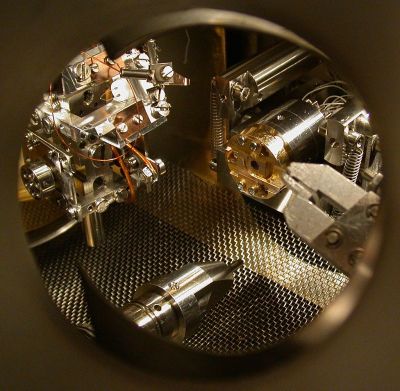The nanotech revolution

A look into the Ultra High Vacuum (UHV) chamber of a UHV Scanning Tunneling Microscope (STM). Several grippers are mounted to move samples back and forth between the holder for multiple samples and the STM microscope which is the tubular
Illustration by Kristian Molhave, CC BY 2.5
Modern nanotechnology has grown massively since its birth in 1981. Now, over 30 years after the launch of the first microscope that could 'see' individual atoms, the global market value for nanomaterials stands at approximately EUR 20 billion. The sector directly employs 300 000 to 400 000 in Europe, and products underpinned by nanotechnology are forecast to grow to a global volume of EUR 2 trillion by 2015.
But what exactly is nanotechnology? It can be defined as the study of phenomena and fine-tuning of materials at atomic, molecular and macromolecular scales. Materials of this size - nanomaterials - have properties which differ greatly from those at a larger scale. Often these properties offer significant advantages such as higher strength, lighter weight, increased control of light spectrum, and greater chemical reactivity. That's why our scientists and engineers are trying to find ways to make materials at the nanoscale.
It's hard for us to conceive of just how tiny nanomaterials are. Try to imagine that one nanometre is a billionth of a metre, and a sheet of newspaper is about 100 000 nanometres thick. On a comparative scale, if a marble were a nanometre, then one metre would be the size of the Earth. It's not surprising that researchers require highly specialised microscopes to observe life at this scale!
The scientific community recognises that nanomaterial-related applications have the potential to create major technological breakthroughs, and therefore nanomaterials have been identified as a key enabling technology. New nanomaterial-related applications include consumer products such as UV-filters in sun creams and anti-odour textiles, as well as medical and technical applications such as tumour therapies and lithium-ion batteries for electrical cars.
However, along with their many advantages, nanomaterials also raise certain concerns. They are similar to normal chemicals/substances in that some may be toxic, and potentially harmful to human health and the environment. All nanomaterials are submitted to a risk assessment although researchers admit that, this being a relatively new area, work on particular aspects of the testing is still required.
published: 2015-01-04

